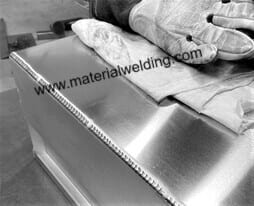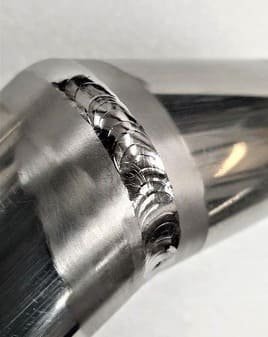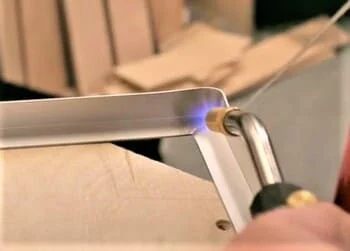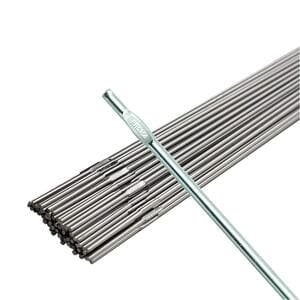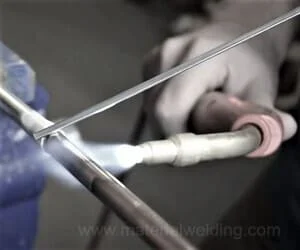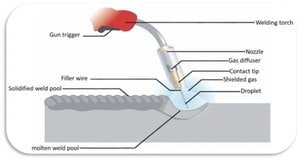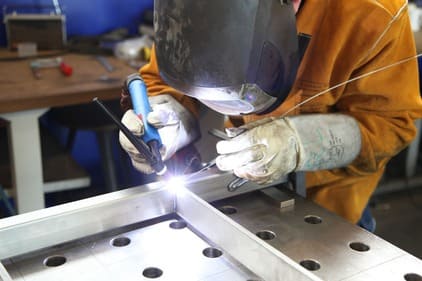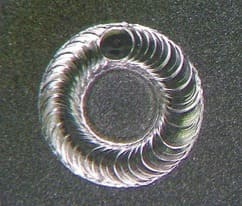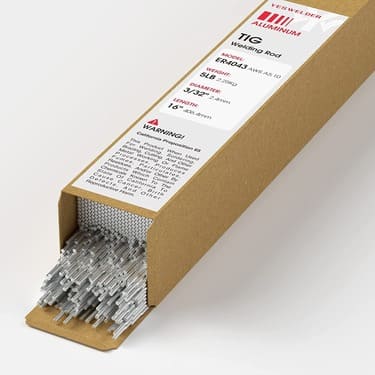Aluminum Welding Rods
Welding aluminum is a process that joins two pieces of metal together by melting them and fusing them together.
This can be done with a variety of welding methods, including gas tungsten arc welding (GTAW)-TIG, gas metal arc welding (GMAW)-MIG, and shielded metal arc welding (SMAW). In order to weld aluminum, you need to use a rod that is specifically designed for the job.
There are many different types of aluminum welding rods available on the market, so it can be difficult to choose the right one. The most important factor to consider when choosing a rod is the type of aluminum you are trying to weld.
Different types of aluminum have different melting points, so you need to use a rod that is compatible with the type of metal you are working with.Welding aluminum can be a tricky process, but with the right tools it can be done easily. One of the most important tools for welding aluminum is a quality welding rod.
There are many different types of welding rods on the market, but when it comes to welding aluminum, you want to use an aluminum welding rod. Aluminum welding rods are specifically designed for welding aluminum. They have a higher melting point than other types of welding rods, so they are perfect for welding thin pieces of aluminum. They also have a smooth surface that helps to create a strong weld.
If you’re looking for a quality welding rod for your next project, consider using an aluminum welding rod. With the right rod, you’ll be able to weld aluminum with ease.
Chemical Compositions for ER1100, ER4043,ER4047, ER5356
The chemical composition of most important TIG, MIG Aluminum wires are given in the below table for reference.
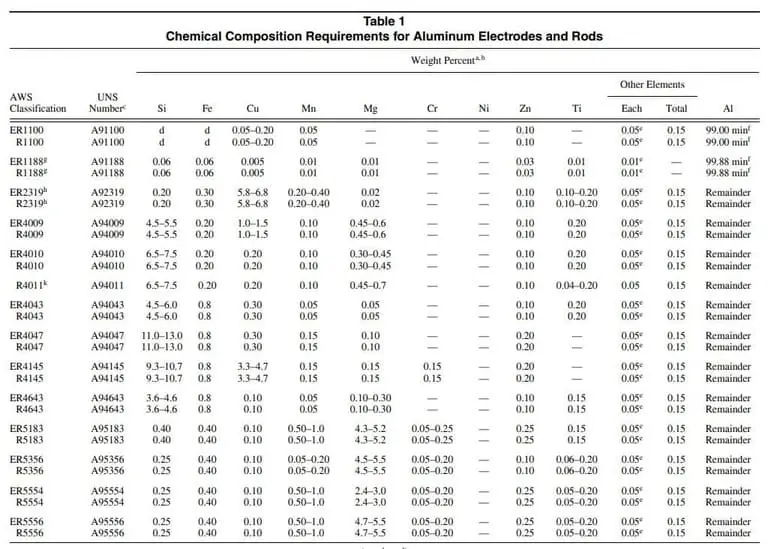
ER1100 TIG & MIG Filler Wire Welding Rod
ER1100 is a 99% Aluminum solid wire for TIG and MIG Welding applications as per AWS A5.10 Electrode specification. ER1100 gives consistent welding performance along with very good corrosion resistance. It has a very good electrical conductivity.
ER1100 give Excellent color match or welding with pure aluminum. ER1100 is used with Direct Current Electrode Positive (DCEP) Polarity. ER1100 is used for welding of Al 99.8%, Al 99.7%, Al 99.5% to perform welding of Tanks, brackets, rail bodies. It is used for welding Aluminum grades 1XXX series and pure aluminum types.
ER4047 TIG & MIG Filler Wire Welding Rod
ER4047 is a aluminum solid welding wire for TIG MIG welding application as per AWS A5.10 Electrode specification. ER4047 has Higher silicon (11-13%) with lower melting temperature making is useable for brazing applications also.
ER-4047 it is a substitute used for in place of ER4043 to give higher silicon content in the weld metal. It gives higher shear strength for fillet weld applications with high surface finish. It is used for welding automotive parts, heat exchanger panels, and aluminum structural welding.
ER4043 TIG & MIG Filler Wire Welding Rod
ER4043 is a general-purpose filler alloy used on welding and brazing that is commonly used in alloys as a filler or to prevent weld cracking. The addition of silicon results in a wetted alloy, resulting in optimal wetting action by welders.
The alloy is insensitive to weld cracking and produces a bright, nearly scan-free weld. It is not suitable for use in anodizing. ER4043 weld deposit are Non-heat treatable. ER4043 is used with Direct Current Electrode Positive (DCEP) Polarity. It is used for welding of most 4XXX, & 6XXX series aluminum.
ER5183 TIG & MIG Filler Wire Welding Rod
ER5183 is a solid aluminum TIG & MIG Filler wire used for Direct Current Electrode Positive (DCEP) or Reverse Polarity. ER5183 generates the highest tensile strength in the as-welded configuration of alloy AA 5083 and similar high-magnesium alloys.
The stronger ER5356 is regularly insufficient to meet the requirements of AA5083 for the as-welded strength. ER5183 welding filler wire is typically utilized in marine and structural applications where high durability/breaking resistance, high density, and exposure to corrosive substances are important.
While the alloy is not recommended for applications that require prolonged exposure to elevated temperatures. ER5183 weld is a non-heat treatable.
ER5356 TIG & MIG Filler Wire Welding Rod
ER5356 is among the most frequently used aluminum welding filler wire rod for TIG & MIG Welding and can be categorized as a general-purpose filler alloy. ER 5356 is ordinarily chosen because of its moderately high shear strength which is crucial for fillet weld joints.
The 5XXX base material, welded with ER5356, with a weld pool of more than 3% magnesium and operating temperatures of more than 65 degrees Celsius, is vulnerable to stress corrosion cracking.
ER5356 weld metal are non-heat treatable, which means their properties can not be altered by heat treatment.ER5356 is used with Direct Current Electrode Positive (DCEP) or Reverse polarity with TIG & MIG Welding. The wire specification for ER5356 is AWS A5.10.
ER5554 TIG & MIG Filler Wire Welding Rod
ER5554 is a Solid Aluminum TIG Filler wire used for TIG & MIG Welding applications. ER5554 welding wire specification is AWS A5.10.
This wire contains 2.7% Magnesium. ER5554 welding wire is used for welding of AlMg materials such as 5454 grades.ER5554 is mainly used for welding of automobiles parts, storage vessels, structures such as automobile frames, etc.
ER5554 welding wire can be used for elevated temperature applications and is not prone to stress corrosion cracking.
ER5556 TIG & MIG Filler Wire Welding Rod
ER5556 aluminum welding filler wire is a versatile filler material that can be used for both TIG and MIG welding. It has a chemical composition that makes it suitable for welding aluminum alloys, and it produces welds with good mechanical properties.
The AWS A5.10 standard specifies the requirements for ER5556 aluminum welding filler wire, including its chemical composition, tensile strength, and other properties. The AWS A5.10 specification recommends the use of ER5556 aluminum welding filler wire for welding AA5454, AA5083, and other similar alloys.
ER5356 vs. ER4043 Filler Wire Welding Rod
ER5356 vs. ER4043 filler wire welding rod is a common question that we are often asked in the welding industry. The two types of filler wire have different properties, so it is important to choose the right one for the job when welding aluminum alloys.
The main difference between ER5356 and ER4043 filler wire is the chemical composition of the alloys. ER5356 filler wire has a higher magnesium content & lower silicon, which makes it more resistant to corrosion. It also has a higher melting point, so it can be used for applications that require a higher degree of heat resistance.
ER4043 filler wire has a higher silicon content & lower Magnesium content, which makes it more tolerant of thermal expansion and contraction. It also has a lower melting point, making it ideal for use in applications that require less heat resistance.
ER1100 vs ER4043
ER1100 and ER4043 welding filler rods are both popular choices for welding aluminum. However, they have different properties that can make them better or worse choices for certain applications.
ER1100 is a pure aluminum rod that is softer and more ductile than ER4043. This makes it a good choice for welding thin sheets of aluminum, as it is less likely to cause cracking.
However, it has less resistance to corrosion than ER4043, so it is not as suitable for outdoor applications. ER4043 is a harder, more brittle rod that is better suited for welding thicker sheets of aluminum.
It has higher resistance to corrosion than ER1100, making it a better choice for outdoor applications. However, it can be more difficult to weld thin sheets with this rod without causing cracking.
